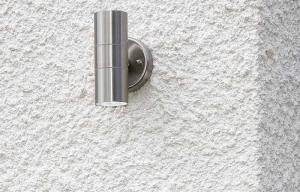please click here:
https://www.cadrotaillift.com/tail-lift.html
Introduction
In the modern logistics and transportation industry, efficiency, safety, and versatility are non-negotiable. Among the most impactful innovations driving these improvements is the Dual-Rail Model Column Tail Lift — a solution designed to simplify the loading and unloading of goods in commercial vehicles. Whether used in delivery fleets, retail distribution, or warehouse operations, this advanced lifting mechanism provides unmatched stability and ease of operation.
This article explores how the dual-rail model column tail lift works, its key advantages over traditional tail lift types, and how businesses can choose and maintain the right lift for long-term reliability.
Understanding the Dual-Rail Model Column Tail Lift
A Dual-Rail Model Column Tail Lift is a hydraulically operated platform lift mounted at the rear of a truck or van. The “dual-rail” design refers to the use of two parallel vertical guide rails that provide superior balance and lifting control, especially for heavier or unevenly distributed loads.
Unlike cantilever or tuck-away lifts that use hinged arms, column lifts move vertically along the rails, keeping the platform level at all times. This makes them ideal for operations where stability and precision are critical — such as transporting fragile, bulky, or heavy goods.
Key Components and Structure
To better understand how the dual-rail model operates, let's look at its primary components:
-
Dual Vertical Rails – Provide the structural support for the lift, ensuring smooth and stable vertical motion.
-
Hydraulic Cylinders – Power the lifting and lowering of the platform with precise control.
-
Platform Deck – The flat surface where goods are loaded, typically made from aluminum or steel for durability.
-
Control System – Includes electric switches or remote controls that manage lift movements.
-
Safety Locks and Limit Switches – Prevent accidental descent or overextension during operation.
How It Works
The operation of a dual-rail tail lift is simple but efficient:
-
The operator positions the platform at ground level using the control switch.
-
Goods are loaded onto the platform using manual or powered equipment such as pallet jacks.
-
The hydraulic system raises the platform along the dual rails to match the vehicle floor height.
-
Once aligned, the operator moves the goods inside the vehicle safely.
This vertical, controlled movement minimizes the risk of load shifting or falling, making it a preferred option for logistics companies dealing with valuable cargo.
Advantages of the Dual-Rail Model Column Tail Lift
The design of the dual-rail system offers multiple operational advantages over other lift types.
1. Exceptional Stability
The dual-rail structure ensures even weight distribution and prevents tilting, even when handling uneven loads.
2. Enhanced Safety
With integrated safety sensors, non-slip platforms, and hydraulic locking systems, the risk of operator injury or load damage is minimized.
3. Precision Positioning
The lift maintains perfect platform alignment, allowing accurate docking with the truck bed.
4. Low Maintenance
Dual-rail lifts typically have fewer moving joints than cantilever models, reducing maintenance frequency and downtime.
5. Adaptability
Suitable for various vehicle types — from medium-duty trucks to large trailers — and for a wide range of industries, including retail, courier, and manufacturing logistics.
Comparison: Dual-Rail Model vs Other Tail Lift Types
| Feature | Dual-Rail Model Column Lift | Cantilever Lift | Tuck-Away Lift | Slider Lift |
|---|---|---|---|---|
| Stability | Excellent – balanced on two rails | Moderate – depends on arm geometry | Good but limited by storage mechanism | High – good for large loads |
| Platform Movement | Vertical, level motion | Tilting motion possible | Folded and deployed | Sliding under chassis |
| Maintenance Needs | Low | Moderate to high | Moderate | High |
| Load Capacity | Medium to high | Medium | Medium | High |
| Ideal Use Case | Precision loading, heavy items | General cargo | Fleets needing compact storage | High-volume logistics |
| Installation Space | Requires rear frame mount | External mount | Compact | Under-chassis mount |
From this comparison, it's clear that the Dual-Rail Model Column Tail Lift strikes the best balance between precision, safety, and reliability — especially in urban delivery or warehouse distribution settings.
Applications Across Industries
The versatility of dual-rail tail lifts allows them to be deployed across various sectors:
-
E-commerce and Retail Distribution: Efficient loading and unloading of packaged goods.
-
Food and Beverage Logistics: Maintaining product safety and preventing damage during transport.
-
Furniture and Appliance Delivery: Handling large, fragile items with maximum control.
-
Medical Equipment Transport: Ensuring sensitive instruments are moved without vibration or shock.
-
Manufacturing Supply Chains: Facilitating efficient transfer of raw materials and finished goods.
Choosing the Right Dual-Rail Tail Lift
When selecting a tail lift, companies should consider several factors to ensure optimal performance and longevity.
Load Capacity
Ensure the lift's rated capacity matches or exceeds the maximum expected load.
Platform Size
The platform should accommodate the largest load dimensions without risk of overhang.
Vehicle Compatibility
The lift must fit the vehicle's chassis structure and electrical system specifications.
Power Source
Tail lifts can be powered by electro-hydraulic systems or integrated vehicle batteries; each has trade-offs in speed and energy consumption.
Safety Features
Look for non-slip surfaces, overload protection, and manual override options for emergencies.
Installation and Customization Options
Modern dual-rail column tail lifts can be customized for specific fleet needs. Options may include:
-
Aluminum Platforms for weight reduction and corrosion resistance.
-
Extended Rails for high-lift applications such as refrigerated trucks.
-
Remote or Wireless Controls for safer and more flexible operation.
-
Integrated Lighting Systems for nighttime loading operations.
-
Custom Branding with powder coating and logo engraving.
Maintenance Best Practices
Proper maintenance ensures long service life and operator safety.
-
Routine Inspection: Check hydraulic oil levels, seals, and connections weekly.
-
Lubrication: Apply grease to moving joints and pivot points periodically.
-
Electrical Checks: Test switches, wiring, and fuses for faults.
-
Load Testing: Perform safety load tests regularly to verify capacity integrity.
-
Cleaning: Remove dirt, oil, and debris to prevent corrosion or slippage.
A well-maintained dual-rail lift can last for years with minimal performance degradation.
Safety Protocols for Operators
Even with advanced design, human safety remains a priority. Operators should:
-
Always check for obstacles before raising or lowering the platform.
-
Avoid exceeding the rated load capacity.
-
Ensure even load distribution before operation.
-
Keep hands, feet, and loose clothing clear of moving parts.
-
Engage safety locks when parked or performing maintenance.
Training and adherence to these safety guidelines dramatically reduce workplace accidents.
Environmental and Efficiency Considerations
Dual-rail tail lifts are increasingly being designed with sustainability in mind. Manufacturers are adopting lightweight alloys, energy-efficient hydraulics, and recyclable components to reduce carbon footprints. Additionally, smart control systems minimize idle time and hydraulic strain, improving energy efficiency and lowering maintenance costs.
The Future of Tail Lift Technology
As logistics automation advances, the dual-rail model column lift will continue evolving with innovations such as:
-
IoT Integration: Remote diagnostics and predictive maintenance alerts.
-
Electric Vehicle Compatibility: Optimized for battery-powered fleet systems.
-
Sensor Automation: Automatic platform leveling and obstacle detection.
-
Lightweight Composite Materials: Enhancing payload efficiency without compromising strength.
These technologies will redefine the role of tail lifts as intelligent, connected components of the modern logistics chain.
Conclusion
The Dual-Rail Model Column Tail Lift represents a crucial step forward in logistics efficiency. Its precision, durability, and safety make it a preferred choice for businesses that prioritize productivity and worker protection. By understanding its features, applications, and maintenance requirements, fleet managers can ensure seamless, long-term performance — transforming how goods are handled every day.
Frequently Asked Questions
1. What is the main benefit of a dual-rail model column tail lift?
It provides stable, vertical lifting with excellent balance, reducing the risk of load shifting or accidents.
2. Can dual-rail tail lifts be installed on any truck?
They are compatible with most medium and large vehicles, but proper chassis evaluation is required.
3. How much weight can a typical dual-rail column lift handle?
Depending on the model, the capacity ranges from 500 kg to over 2000 kg.
4. Are dual-rail lifts more expensive than other types?
While initial costs may be higher, lower maintenance and longer lifespan offer better long-term value.
5. How often should a tail lift be serviced?
Basic inspections should occur weekly, with full maintenance checks every 3 to 6 months.
Summary
The Dual-Rail Model Column Tail Lift enhances logistics operations through stability, precision, and safety. This guide explores its structure, benefits, comparison with other lifts, and maintenance essentials, helping businesses boost efficiency and protect their workforce.






